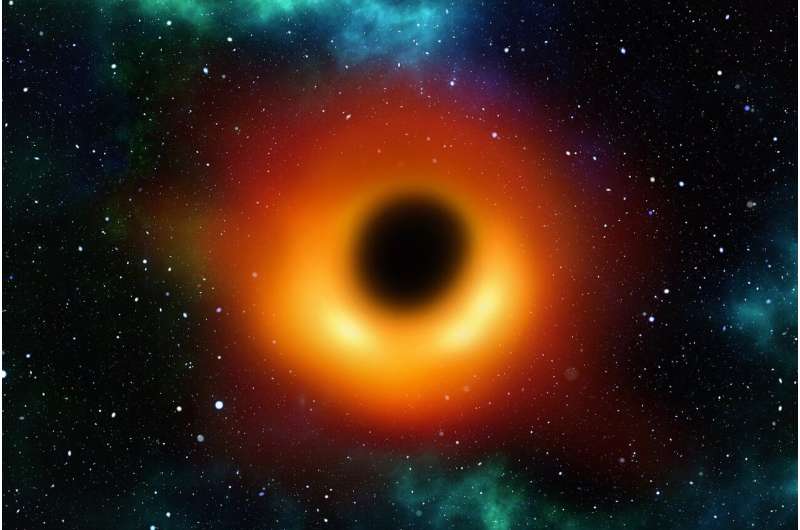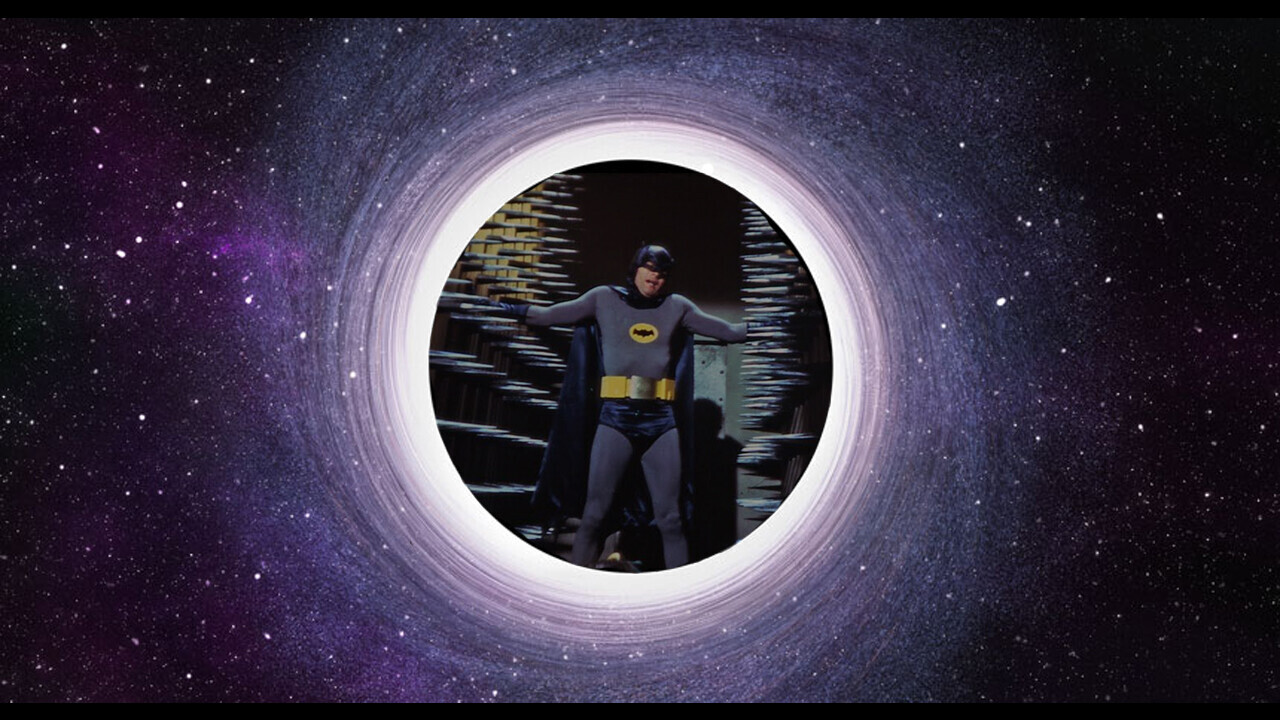Black holes found to exert a pressure on their environment

Physicists at the University of Sussex have discovered that black holes exert a pressure on their environment, in a scientific first.
In 1974 Stephen Hawking made the seminal discovery that black holes emit thermal radiation. Previous to that, black holes were believed to be inert, the final stages of a dying heavy star.
The University of Sussex scientists have shown that they are in fact even more complex thermodynamic systems, with not only a temperature but also a pressure.
The serendipitous discovery was made by Professor Xavier Calmet and Folkert Kuipers in the Department of Physics and Astronomy at the University of Sussex, and is published today in Physical Review D.
Calmet and Kuipers were perplexed by an extra figure that was presenting in equations that they were running on quantum gravitational corrections to the entropy of a black hole.
During a discussion on this curious result on Christmas Day 2020, the realization that what they were seeing was behaving as a pressure dawned. Following further calculations they confirmed their exciting finding that quantum gravity can lead to a pressure in black holes.
Xavier Calmet, Professor of Physics at the University of Sussex, said: "Our finding that Schwarzschild black holes have a pressure as well as a temperature is even more exciting given that it was a total surprise. I'm delighted that the research that we are undertaking at the University of Sussex into quantum gravity has furthered the scientific communities' wider understanding of the nature of black holes.
"Hawking's landmark intuition that black holes are not black but have a radiation spectrum that is very similar to that of a black body makes black holes an ideal laboratory to investigate the interplay between quantum mechanics, gravity and thermodynamics.
"If you consider black holes within only general relativity, one can show that they have a singularity in their centers where the laws of physics as we know them must breakdown. It is hoped that when quantum field theory is incorporated into general relativity, we might be able to find a new description of black holes.
"Our work is a step in this direction, and although the pressure exerted by the black hole that we were studying is tiny, the fact that it is present opens up multiple new possibilities, spanning the study of astrophysics, particle physics and quantum physics."
Folkert Kuipers, doctoral researcher in the school of Mathematical and Physical Science at the University of Sussex, said: "It is exciting to work on a discovery that furthers our understanding of black holes—especially as a research student.
"The pin-drop moment when we realized that the mystery result in our equations was telling us that the black hole we were studying had a pressure—after months of grappling with it—was exhilarating.
"Our result is a consequence of the cutting-edge research that we are undertaking into quantum physics at the University of Sussex and it shines a new light on the quantum nature of black holes."'
Is a parallel universe pushing back?

STORY BY
Tristan Greene
Did you know Neural is taking the stage this fall? Together with an amazing line-up of experts, we will explore the future of AI during TNW Conference 2021. Secure your online ticket now!
Scientists from the University of Sussex recently stumbled upon a startling discovery: black holes emit quantum pressure.
What’s quantum pressure? Nobody’s quite sure, but it’s very exciting!
Up front: To put this discovery into perspective, the last time someone discovered a new mechanical facet of black holes was when Stephen Hawking determined they emit thermal radiation in 1974.
The Sussex researchers were conducting a study on a Schwarzchild black hole – considered the simplest of all black hole types – when they stumbled across a mathematical outlier.
Per a press release:
The serendipitous discovery was made by Professor Xavier Calmet and Folkert Kuipers in the Department of Physics and Astronomy at the University of Sussex.
Calmet and Kuipers were perplexed by an extra figure that was presenting in equations that they were running on quantum gravitational corrections to the entropy of a black hole. … Following further calculations they confirmed their exciting finding that quantum gravity can lead to a pressure in black holes.
Background: Einstein’s theory of relativity doesn’t really cover this. In essence, the Sussex team’s managed to add an extra layer of information to our existing knowledge of black holes.
Between Einstein’s theory of relativity, Hawking‘s observations on black hole temperatures, and the new research attempting to define the quantum pressure of black holes, we’re starting to bring the physics of singularities into focus.
Quick take: What we don’t know about black holes could fill an entire universe. It’s long been assumed that nothing, not even light, can escape a singularity. But that assumption may not be able to account for quantum pressure.
Where does quantum pressure come from? How does a black hole – a bunch of matter condensed into a single, infinitely small point – manage to exert pressure as well? How intrinsically related to this measurement of pressure is the thermodynamic radiation of a black hole?
What does this mean for multiverse theories involving ‘white holes‘ in an opposite, parallel universe existing as a mirror reflection of our universe’s black holes? Is the white universe pushing back against our black holes?
We have so many questions!
But this is early work and it’ll take years for other science teams to confirm these results and come up with novel uses for the data.
You can read the entire paper here.
[Related: Immortality or spaghetti? Why parking your spaceship inside a black hole is a huge gamble]
No comments:
Post a Comment